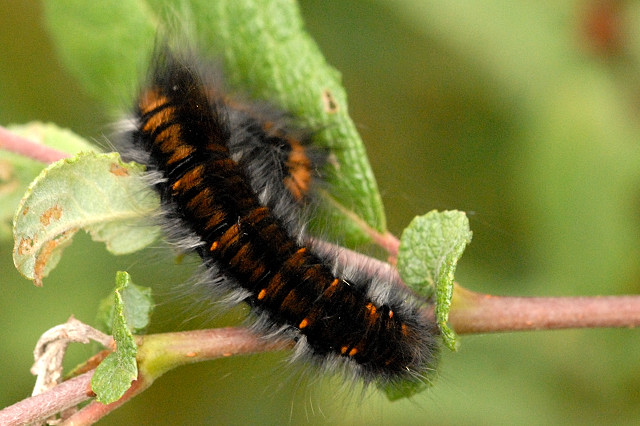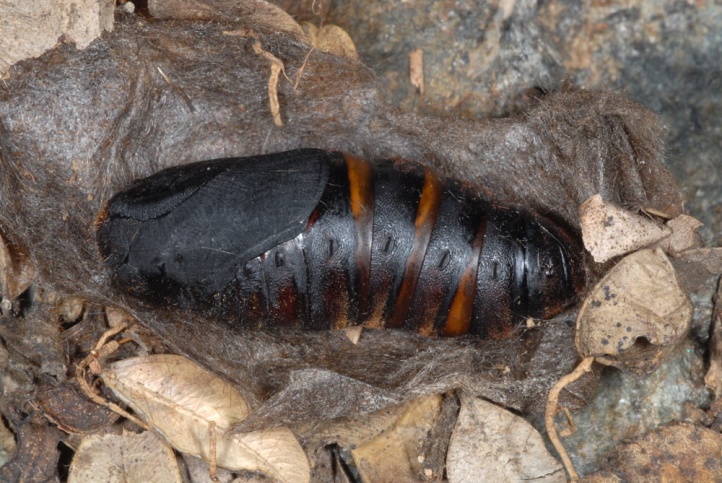Macrothylacia rubi
Brombeerspinner ( Macrothylacia rubi )
- 5.1 Notes and references
Features
The moths reach a wingspan of 38-68 millimeters. The females have gray-brown forewings, the male red-brown or gray-brown. Both are wearing two narrow, bright yellow transverse bands. In between, the wing coloration is brightened somewhat in the males.
The caterpillars are about 80 mm long. They are initially black, with bright yellow or orange segment incisions and bear a few long, light gray hair. At the age they are in thick, black and reddish-brown hair much darker. But on the sides they still bear light gray hair.
Occurrence
The animals come in all of Europe except for the far north and parts of the Mediterranean Basin, east to Central Asia before. They are the most common Gluckenart in Central Europe. They are found in a variety of open, both dry and moist areas like on dry grass, on slopes, meadows along forest edges and in bogs.
Way of life
The females are crepuscular and nocturnal and can be early attracted by artificial light sources. The males fly in the late afternoon and at dusk around just above the vegetation and wild in very rapid zigzag flight to track estrous females.
Flight times and caterpillars
The moths fly in one generation from mid-May to July. The caterpillars can be found in August and after hibernation until April.
Food of the caterpillars
The caterpillars feed on various herbaceous plants and shrubs such as Yellow Rockrose ( Helianthemum nummularium ), blackthorn (Prunus spinosa), Salad Burnet ( Sanguisorba minor), wing broom ( Genista sagittal ), raspberry (Rubus idaeus ), blackberry ( Rubus fruticosus ), clover ( Trifolium ), vetches (Vicia ) and plantain ( Plantago lanceolata).
Development
The females glue their eggs 2.5 mm long near the ground, but also up to a maximum height of 1.5 meters, in groups around the stem. The eggs are oval, light cream, have a dark spot at the pole and therefore a light brown, circular pattern. The caterpillars are solitary and hide during the day under stones. In the evening they climb up on the vegetation. You see them occasionally in the late summer when crossing roads, or open, barren places. When they sense danger, they curl together and remain in this position for several minutes. Your hair may cause allergic reactions in touch. They hide themselves fully developed by the end of August and overwinter before without eating in the spring, once again, pupate in a gray, tubular solid web. Sometimes you can find them on warm days, very early in the year, in search of a suitable Verpuppungsplatz.








